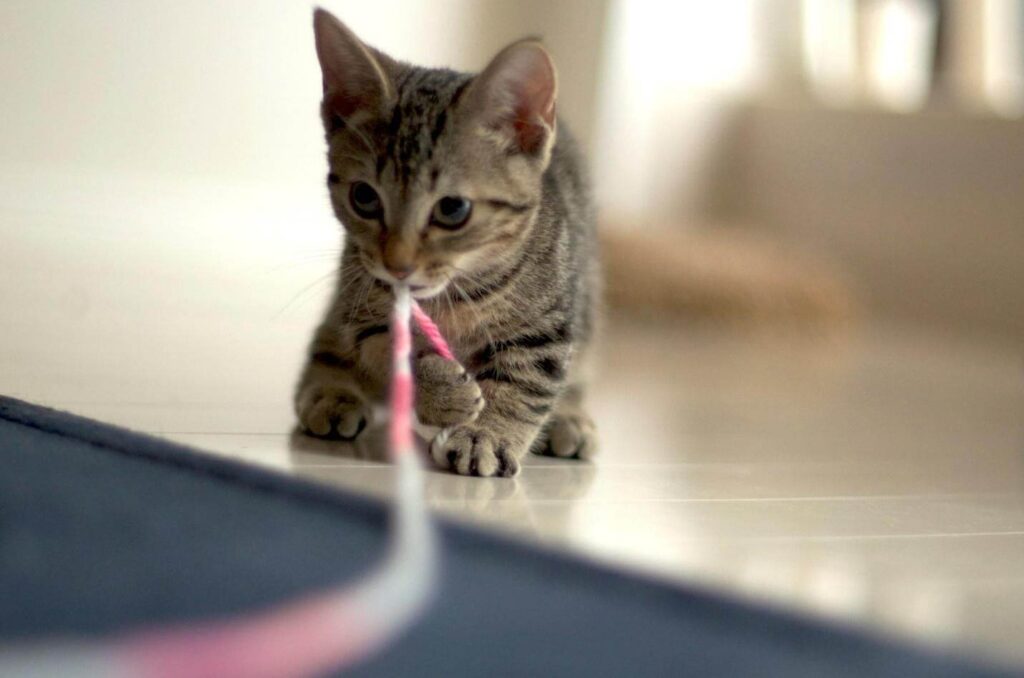Munchkin cats are domestic cats that command mixed reactions at first glance due to their unusual look. Some folks love them at first sight, while others hate them. However, they are adorable pets when you get to know them which is why their appeal is on the rise.
The International Cat Association acknowledged them as a breed in 2003. However, the Cat Fanciers’ Association is yet to accept them as a breed. Why this is the case will be looked at in this article. Also, we will show you a number of things you need to know about Munchkin cats as a breed. If we believe it’s worth knowing, you’ll likely find it here.
History
One of the stand-out physical features of the Munchkin is its short legs. This is because of a natural genetic mutation rather than a function of selective breeding.
Many have said that the gene that causes this physical trait is similar to the one responsible for the Welsh corgis and the Dachshunds short size. While these canines experience spinal problems due to this issue, munchkins don’t because of the physical difference of a cat’s spine compared to dogs.
During the 1940s, different generations of cats with short legs were described by a veterinarian in the U.K. These cats however were lost during World War II, but in 1953, in Stalingrad, one was described.
After thirty years, Sandra Hochenedel found a cat with short legs in Louisiana, USA. She named this cat Blackberry. And when Blackberry gave birth, the litter had short legs as well as half-long legs. This was the case with subsequent kittens Blackberry delivered.
Hochenedel gave her friend called Kay LaFrance a male cat from the litter named Toulouse. The current breed of Munchkins is descended from Toulouse and Blackberry.
The gene responsible for the short legs of these cats is regarded as autosomal dominant. What this means is it isn’t linked to any sex and its expression doesn’t matter whether it is gotten from both or just one parent.
The negative aspect is that if the gene is gotten from the father and mother, it is fatal thereby leading to the death of such embryos within the womb. Hence, munchkins are bred only with regular cats or other breeds instead of another munchkin to avoid this problem. The progeny of such mating has a 50-50 rate of being a munchkin or not.
As we mentioned in the introduction, associations like the Cat Fanciers’ Association are opposed to the idea of recognizing these cats as a breed because of their mutation abnormality. They say that promoting such a mutation that is harmful to the cat isn’t ethical. Others like the International Cat Association say that the breed doesn’t have health concerns and lives a long life.
Overview

Length
These cats are about one and a half foot long. Their legs when compared to other cats are around 3 inches shorter.
Weight
Munchkin cats weigh about 6 to 9 pounds when fully matured.
Coat
They have either shorthaired combined with a medium plush coat or longhaired combined with a semi-long silky coat.
Coat Color
They have different color combinations and patterns.
Eye Color
You can find them with blue, copper, brown, yellow, and green eye colors.
Life Expectancy
These cats are expected to live up to 12 to 15 years under the right conditions. Click here to find out the life expectancy of other cats.
Characteristics
The following are the characteristics of the munchkin cat…
Friendliness – High
Affection Level – High
Pet-Friendly – High
Kid-Friendly – Medium
Playfulness – High
Exercise Needs – High
Intelligence – High
Energy Level – High
Shedding Amount – Medium
Vocalization – Medium
Pros and Cons
Pros
- Social, playful, and loving.
- Jumping to high places is highly unlikely because of its short legs.
- Not prone to breed-particular sickness of any sort.
Cons
- The controversy surrounding this breed.
- Can’t groom itself properly because of its short legs, hence, you will have to help in its grooming.
Diet
The munchkin cat does not require a special diet as it can eat whatever domestic cats eat. It can eat either wet food or dry food. But, wet food has been observed to be more preferable. Also, make sure it always has water.
Common Health Issues
As mentioned in the pros above, these cats do not have an illness that is peculiar to their breed. Rather, they have the following health issues common with domestic cats:
- Pancreatitis – pancreas inflammation.
- Hyperthyroidism – hormonal imbalance.
- Feline lower urinary tract disease.
- Uremia – kidney disorder
- Lymphosarcoma – cats and dogs cancer.
Care
These adorable cats have a likeness to ferrets due to their playful nature when they run and how they play with toys. Hence, you need a good number of toys to keep this cat happy. Their ability to sit on their back legs like rabbits makes them more adorable. This is why the Stalingrad cat was called “Stalingrad Kangaroo Cat”.
As we mentioned in the cons section, you will have to dedicate more time to grooming because it lacks the reach to certain areas itself. You have to brush their coats weekly if they are shorthair. And if they are long-haired, you brush more times within the week. This coat maintenance will prevent matting and hairballs.
Also, always check the nails and keep them trimmed. Brush the teeth severally within the week and frequently at the veterinarian.
Minimize its going out to prevent it from accidents and getting disease exposure and fight wounds from other felines.
There are different types of munchkin cat breeds based on crossbreeding. Visit https://catvills.com/8-munchkin-cat-breeds/ to learn more about these crossbred munchkins.
Conclusion
There you have it, all the important information about munchkins. If you want to get one, we recommend you contact reputable breeders to get a healthy cat.










